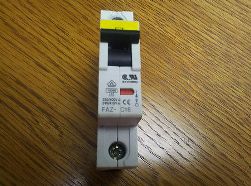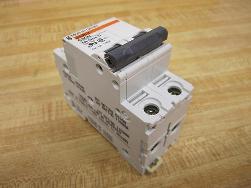Categories: Featured Articles » Electrician at home
Number of views: 42819
Comments on the article: 5
How to choose circuit breakers and RCDs?
 When repairing or replacing wiring, the question necessarily arises of choosing protection devices - circuit breakers, RCD and difavtomatov.
When repairing or replacing wiring, the question necessarily arises of choosing protection devices - circuit breakers, RCD and difavtomatov.
Circuit breakers protect the line from overload currents and short circuit currents. For example, you have turned on an overly powerful heater or electric oven in a conventional outlet, the current in the line exceeds the value that is permissible for it, the wire begins to heat up and, in order to prevent overheating and melting of the insulation, the circuit breaker trips and disconnects this line after some time.
In the event of a short circuit in the line, the circuit breaker trips almost instantly, disconnecting the protected circuit.
Residual current devices (RCD) They are used to protect a person from electric shock when touching live parts and to prevent dangerous leakage of current if the insulation of the wiring or household appliances is damaged, which can cause a fire.
For example, as a result of damage to the insulation, a potential dangerous to humans may appear on the body of the electric stove. Also, a person may accidentally touch a bare phase wire, which is energized, or a child, playing, shoves something metallic in the socket. Also, as a result of natural aging or damage to the insulation of wires, weakening of contact joints, current leaks occur, which lead to sparking and can cause a fire. To protect against such situations, RCDs are also used.
 In order for the protection to be effective, it is necessary to correctly calculate and choose the protection devices. The reliability and safety of operation of the wiring and the electrical appliances connected to it depend on this.
In order for the protection to be effective, it is necessary to correctly calculate and choose the protection devices. The reliability and safety of operation of the wiring and the electrical appliances connected to it depend on this.
I believe that in order to correctly calculate and select protection devices, it is necessary to fulfill three main factors:
- know the purpose, design of the protection device and understand the principle of operation of all its components;
- it is necessary to clearly understand the basic parameters and characteristics;
- know the standards and methods of choice.
Not knowing the purpose and design, not understanding the principle of action, proceeding to the choice does not make sense.
The main characteristic of the circuit breaker is the rated current, and the RCD is the rated breaking differential current (leakage current setting). In addition to the main characteristics, each of the protection devices has several more important parameters that must be considered when choosing them.
It is necessary to take into account the age and material of the wiring (it is new or old decrepit, copper or aluminum), the quality and condition of the connections. Wiring can be in a new house, or maybe in an old one, a house can be located close to a transformer substation - these factors affect the characteristics of protection devices, and this should be taken into account when choosing them.
The temperature of the room in which the electrical panel is installed, the number of installed devices nearby, the line load, all these parameters must also be taken into account. How do these factors affect circuit breaker operation? read this article.
Circuit breakers and RCDs are usually connected according to a multi-stage (tree-like) circuit.
For example, a typical electric circuit of a private house: an opening machine at the entrance to the house, a general machine in the electrical panel of the first floor, a general machine in the electric panel of the second floor. On each floor, the network is divided into separate groups: sockets, lighting, separately connected devices (electric stove, boiler, washing machine, air conditioners, etc.)
If an accident occurs in any of the groups, only the protection device of this group should be triggered, be it a circuit breaker or a residual current device. Those. selectivity must be fulfilled, it is ensured by the correct combination of parameters of higher and lower devices.
So non-observance of selectivity for RCD will lead to the fact that in most cases a higher RCD will work, or both at once. And this makes it difficult to find and eliminate the malfunction that led to the operation of the RCD.
Different types of electrical appliances in the event of a malfunction can create different types of leakage currents. For the most effective protection of people from electric shock, it is necessary to choose an RCD of the appropriate type.
Also, various types of RCDs behave differently under emergency power conditions. So with neutral wire break some types RCDs turn out to be inoperative, and this is a fairly common occurrence in our homes.
Well, without knowledge of the PUE and other regulatory documents, it is simply impossible to proceed to the selection and calculation of protection devices.
After the RCD has been selected, it is very important to connect it correctly in the electrical panel: RCD connection diagrams
The multimedia video course "Circuit Breakers and RCDs - Selection Strategy" offers a comprehensive solution for the design, operating principle, main parameters, methods for choosing circuit breakers, RCDs, differential machines, you will find answers to many questions in it, you can freely start repairing or replacing wiring in his apartment.
P.S. Links to the video course removed due to loss of relevance.
See also on this topic:Selection of circuit breakers for an apartment, house, garage
See also at e.imadeself.com
:
